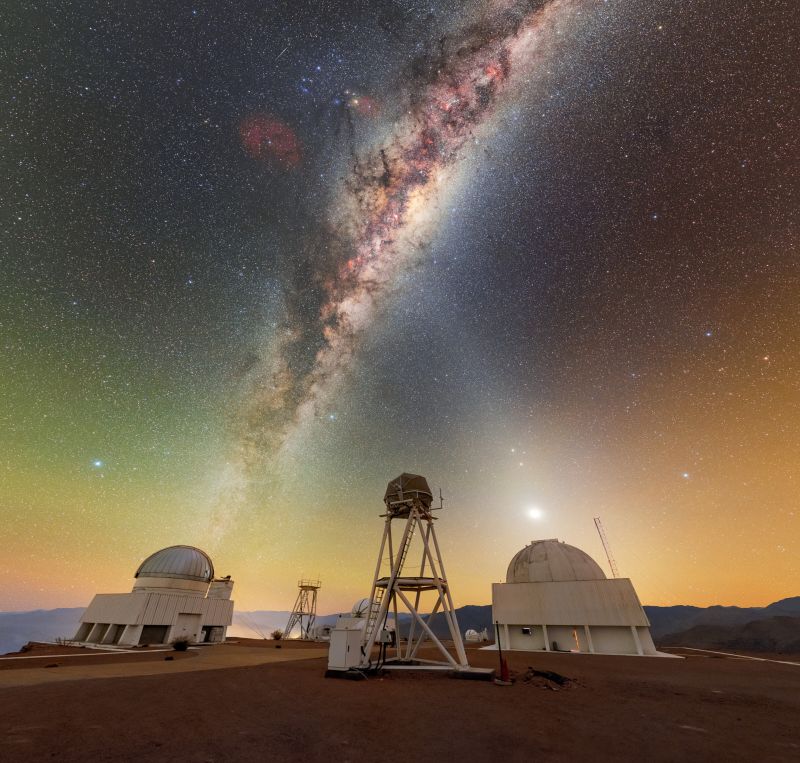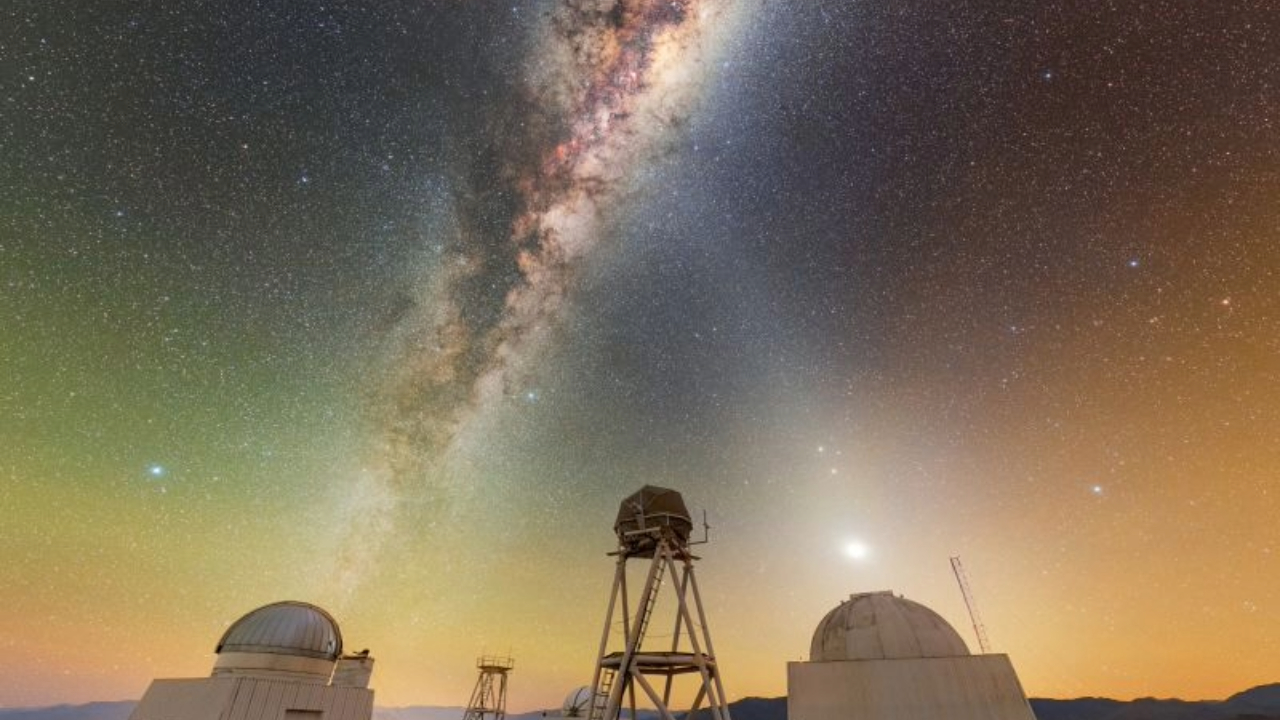Recently, the Chilean night sky was illuminated by the glow of the Milky Way galaxy as it was seen above the domes of telescopes at the Cerro Tololo Inter-American Observatory (CTIO), a facility of the National Science Foundation's (NSF) NOIRLab.
What is it?
A cone of zodiacal light intersects the iconic Milky Way, creating an x-shape in the night sky. NOIRLab highlighted this x-shape in a recent LinkedIn post, saying: " X marks the spot at Cerro Tololo!"
Zodiacal light extends in a triangular shape from Earth's horizon along the ecliptic, the apparent annual path of the sun across the sky, serving as the baseline for positions of the planets and zodiac constellations. This special light is the reflection of sunlight off particles and dust in the solar system.
Astronomers can study zodiacal light to map the distributions and possible origins of cosmic dust, revealing further insights about the processes happening in our solar system.
Where is it?
This image was taken at the CTIO facility, around 310 miles (500 km) north of Santiago, Chile at an elevation of 7,200 feet (2200 meters). Its location allows it to avoid light pollution from urban areas.

Why is it amazing?
As a major astronomical research facility, the CTIO hosts nearly 40 telescopes at it site, which offers exceptionally clear dark skies to peer deep into space. These telescopes are used for many different projects, from studying near-Earth asteroids to space debris to exoplanets.
CTIO's mission is to provide world-class observing capabilities to the global astronomical community, supporting key discoveries while helping us to further understand more about our universe.
Want to learn more?
You can read more about telescopes based in Chile and night sky photography.
.png)
 German (DE)
German (DE)  English (US)
English (US)  Spanish (ES)
Spanish (ES)  French (FR)
French (FR)  Hindi (IN)
Hindi (IN)  Italian (IT)
Italian (IT)  Russian (RU)
Russian (RU) 





Comments